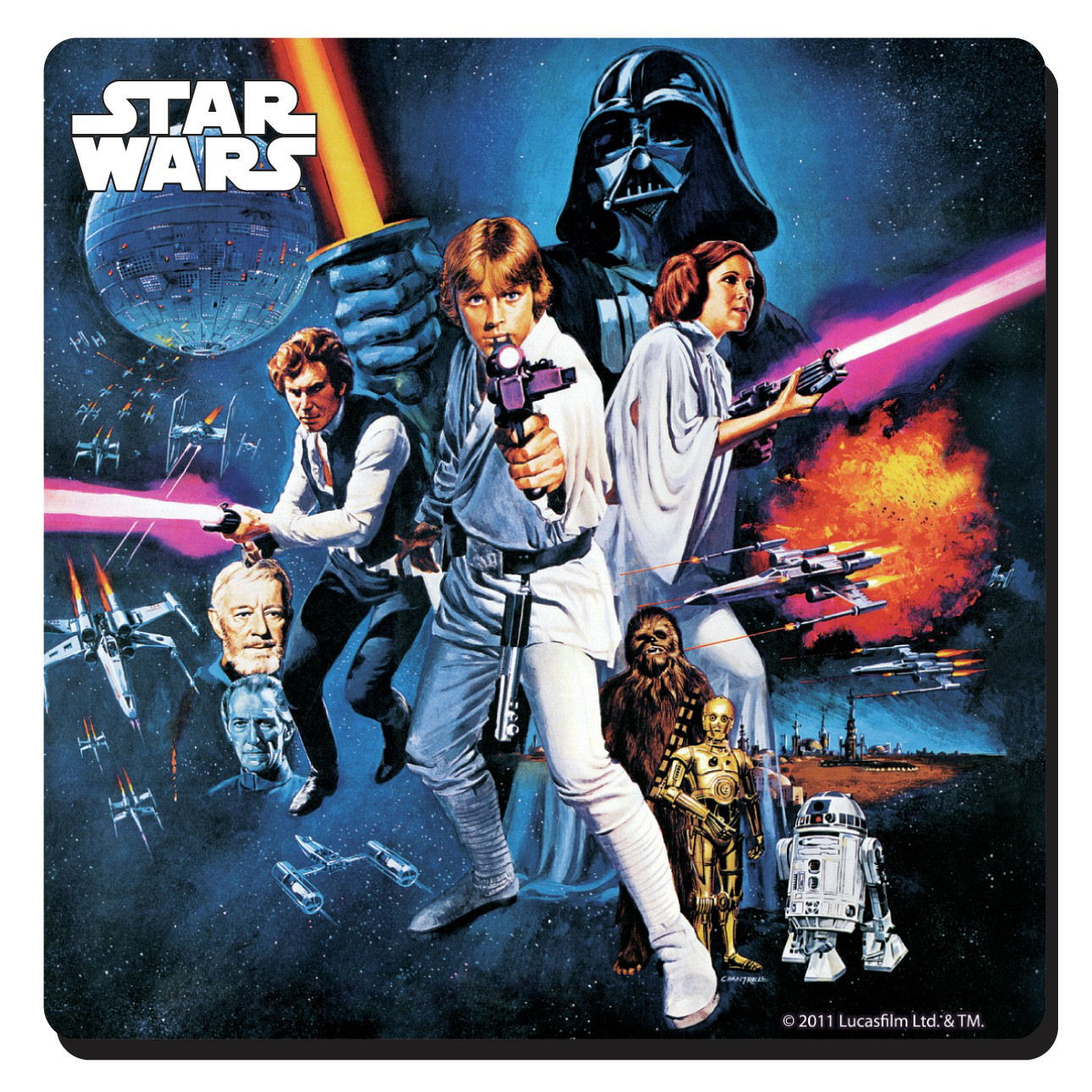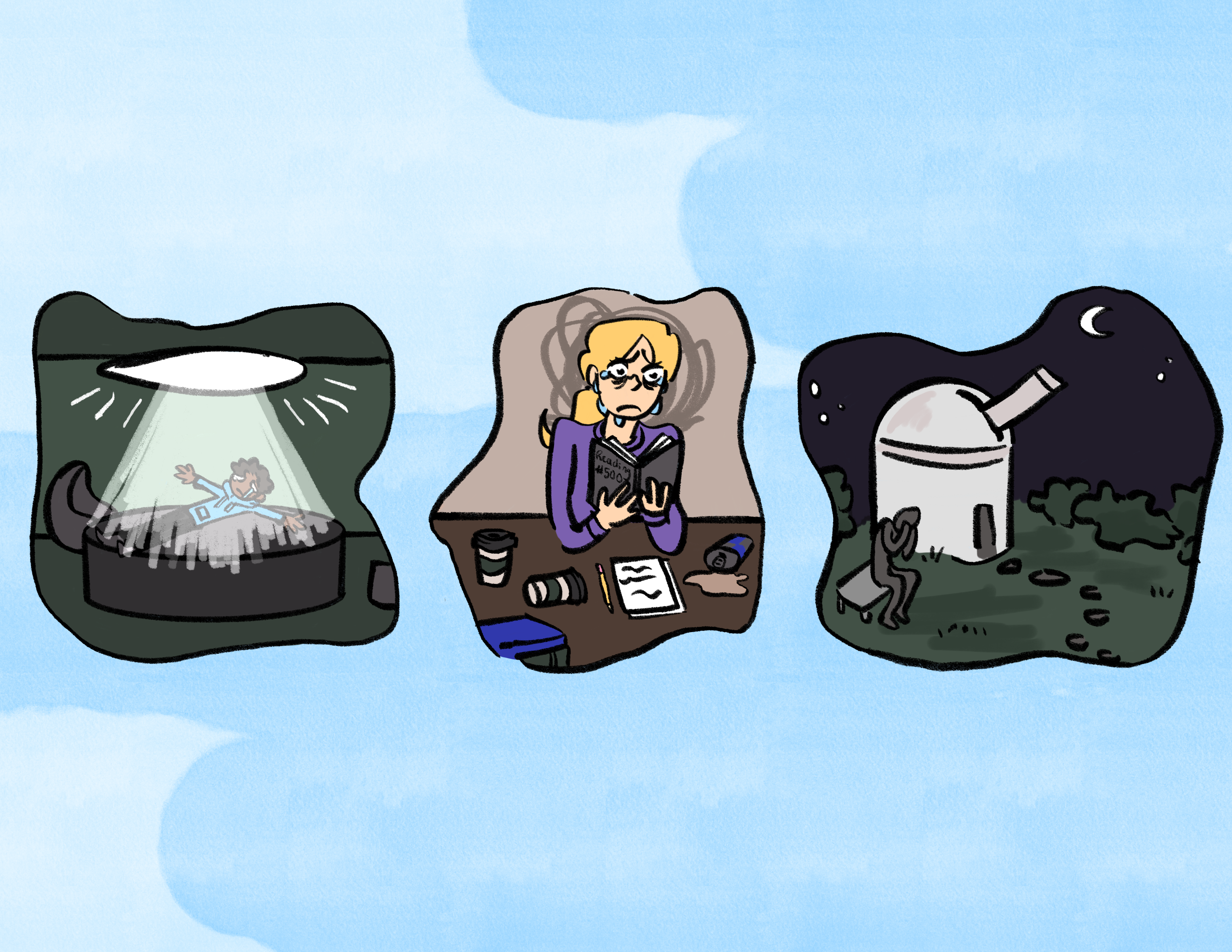Released in 1977, Star Wars Episode IV: A New Hope was originally simply titled Star Wars. At this point, Lucas did not have any notion of a trilogy or expanded saga. It was an instant hit, garnering rave reviews and breaking box office records. When I rewatched the film, the first word that came to mind was “iconic.” Everything about the film is iconic, from the opening shot to the introduction of Darth Vader to the pulse-pounding fight at the end of the film. However, as difficult as it was, when you remove the nostalgia goggles and analyze the film objectively, A New Hope does have its fair share of flaws.
The film starts with one of the best-crafted opening shots in all of cinema. It tells you everything you need to know about the conflict between the Empire and the Rebellion. A small ship is pursued and attacked by a massive, imposing Star Destroyer that takes up the entire frame when it first passes overhead. This is a brilliant example of Lucas’s ability to be a visual storyteller as opposed to hitting the viewer over the head. The succeeding introduction of Darth Vader is perfectly constructed, and it brilliantly introduces Vader as an incredibly threatening villain.
Episode IV works so well because the entire film feels like a brand new experience to the viewer. Granted, it was the first Star Wars film released, but it provides a satisfying amount of answers and shrouds itself in just enough mystery to keep the viewer involved. Mark Hamill’s Luke Skywalker is an excellent protagonist because he acts as the audience’s surrogate. The audience is taken along on his journey as he learns more about the Empire, the Rebellion, and the Force. The film is not afraid to be a little cheesy or overly earnest at times, but it has so much heart and passion put into it that it is impossible not to love every minute of screen time.
With that being said, the film does have its problems. Most of the issues revolve around Luke and his reactions to various events. It never feels like Luke is given a chance to actually have an emotional reaction to what happens in the story: he finds his family dead at the hands of the stormtroopers, has a moment, and then promptly gets whisked off to Mos Eisley without a chance to grieve. Later, when Obi-Wan is killed, Luke has a brief respite where he mourns the loss, but a minute later he’s shooting at TIE Fighters and saving the rebellion. Even the famous medal scene at the end gets whitewashed, as there is no mention of any of the lives lost in the assault on the Death Star. It is easy to wave this flaw away as unnecessary for an already packed film, but Luke feels shortchanged as a character.
Fortunately enough, while Luke may be shortchanged as a character, Han Solo is established as one of the greatest film characters ever created. Harrison Ford is perfectly cast, and Han easily gets the best character arc in the whole film. The audience gets to follow his reluctance to help Luke and Obi-Wan all the way to his great entrance into the final battle when he saves Luke from Vader. The infamous “Han shot first” scene is still awkwardly edited, but if you pretend that Greedo never shot (as I do), then it is a perfect introduction to the character.
Watching the great Sir Alec Guinness’s performance as Obi-Wan with the prequel trilogy in mind actually lends a new appreciation for his portrayal of Ben Kenobi. Ewan McGregor excels at channeling a young Guinness, and Guinness’s performance in A New Hope is wonderfully understated and wise. He is a perfect mentor for the audience, even if there is no explanation as to how he cannot remember who R2-D2 and C-3PO are. The final showdown between him and Vader may be a little silly to watch. It essentially is two minutes of lightsaber-tapping as the two move around slowly; certainly a far cry from the backflipping lava-filled fight at the end of Return of the Sith. What really works about the scene is the emotion between the two characters. Although audiences at the time had not witnessed the entire backstory between Vader and Kenobi, you still get an excellent feel for the relationship between the two just from their interactions in A New Hope. The fight has emotional weight, and that is what makes it so fantastic. The prequels had flashy choreography and great visuals, but they lacked the emotional importance. You don’t particularly care what happens between Qui-Gon, Obi-Wan, and Darth Maul, or who wins between General Grievous and Obi-Wan. The fights are simply a ton of fun to watch. The only ones that really involve you are between Yoda and Palpatine and Anakin and Obi-Wan. Every fight in the original trilogy has emotional stakes, and the fights themselves are few and far between. This is what makes the showdown in A New Hope so great, despite the laughable choreography.
The film works on a ton of levels, and it still holds up today. Lucas proves that he could take an amalgam of genres and turn it into something great. There is the occasional bad line of dialogue or strange character reaction, but there is so much effort poured into the film that it is impossible not to walk away with a beaming smile on your face.
Star Wars Ranking: 2/6





